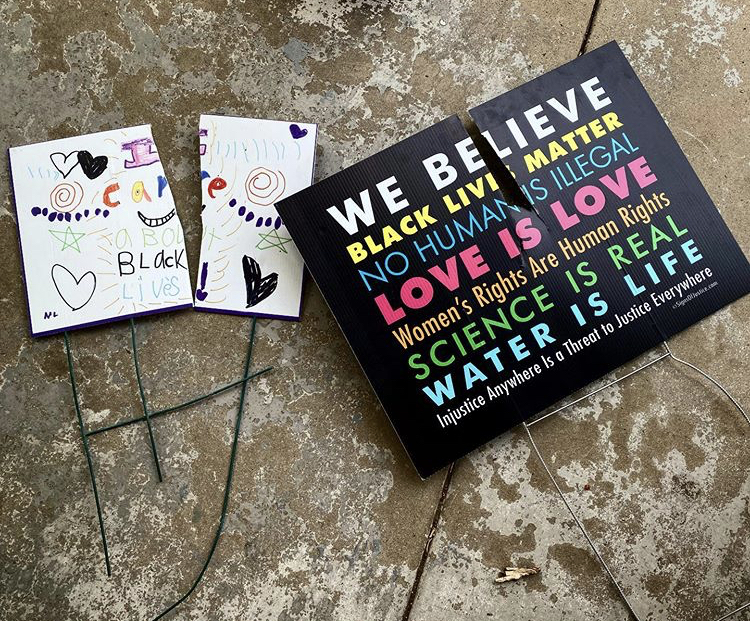During the late hours of the night on August 23, many Salida residents with signs supporting black lives and rainbow flags woke up to find them vandalized. When people think of hate crime it is usually the extremes: attacks, violence, murders. The FBI defines a hate crime as “a criminal offense against a person or property motivated in whole or in part by an offender’s bias against a race, religion, disability, sexual orientation, ethnicity, gender, or gender identity.”
Colorado defines hate crimes in Statutes Title 18. Criminal Code § 18-9-121. Bias-motivated crimes as “A person commits a bias-motivated crime if, with the intent to intimidate or harass another person because of that person’s actual or perceived race, color, religion, ancestry, national origin, physical or mental disability, or sexual orientation, he or she:
(a) Knowingly causes bodily injury to another person; or
(b) By words or conduct, knowingly places another person in fear of imminent lawless action directed at that person or that person’s property and such words or conduct are likely to produce bodily injury to that person or damage to that person’s property; or
(c) Knowingly causes damage to or destruction of the property of another person.”
What happened in Salida on the night of August 23 was a hate crime by definition.
Word of this vandalism spread through Salida’s Facebook groups, many outraged by what had happened. The issue with this crime is not the destruction of the property itself but what that destruction means.
Director of Policy and Programming of Ark Valley Equality Network and prominent figure within the Chaffee County LGBTQ+ community, Jimmy Sellars, explained that many community members were “texting and writing us directly mainly around the fact that they feel it’s not being taken seriously. It’s difficult because it is not pointing fingers at anyone specifically, its dealing with this heteronormative view of an issue. People who are there to protect and serve are concerned with the destruction of your property.” This emphasis on property and not what the destruction is highlighting is dangerous and harmful to marginalized groups within Salida.
Sellars continued, “a lot of these issues seemed to appear at the death of George Floyd, but these issues have been happening for years here and hundreds of years within society. Whoever is acting out this way, no matter their intention, our leaders need to understand what that property represents and be able to meet it head-on. That’s the biggest issue here. This is another representation of how we deal with communities that we treat as marginalized.”
Brinkley Nelson was one community member who woke up to vandalized signs on the morning of the 24. He explained the difficulty of explaining this vandalism to one of his children. Nelson said, “we were leaving to go out on a family outing and my wife noticed them. They were sliced with something and the frames were bent.”
Nelson continued “it’s been hard explaining it to our three-your-old. She doesn’t understand. She doesn’t understand evil. She doesn’t understand why people would do bad things to anyone. It’s a hard lesson to try to teach a three-year-old.”

Brinkley Nelson’s damaged signs. Courtesy of Instagram.
Pictured to the right are Nelson’s signs which were vandalized. Nelson went on to explain, “one of the signs was made by our neighbor down the street. She knows her friend made that and that something her friend made was destroyed further complicates things.”
Nelson said, “it is definitely targeting. What I’ve seen pop up on social media sharing what has happened to their flags and such. I think that it very well could have been kids and most likely would have been, but they didn’t come up with it on their own. It is definitely targeting and is a certain message they are in essence trying to silence.”








I don’t agree totally with the message of the signs, for instance I wholeheartedly embrace the concept Black Lives Matter, but I do not support the Marxist organization “BLM” who is dividing Americans and burning down our cities.
However, I condemn destroying or tearing down any political sign, disrespecting someone for wearing a hat, tearing down statues, or destroying other people’s property, in summary, no one should show hate or disrespect for any fellow American!
Dennis Heap
Buena Vista, Colorado